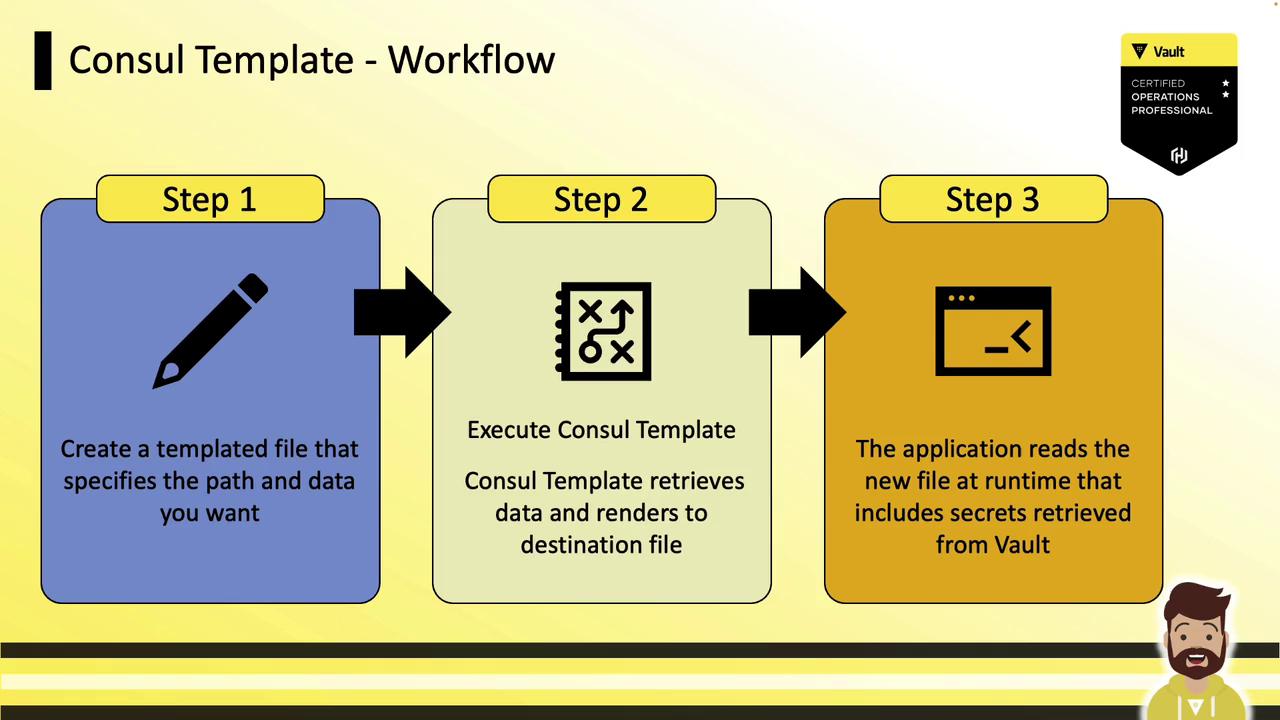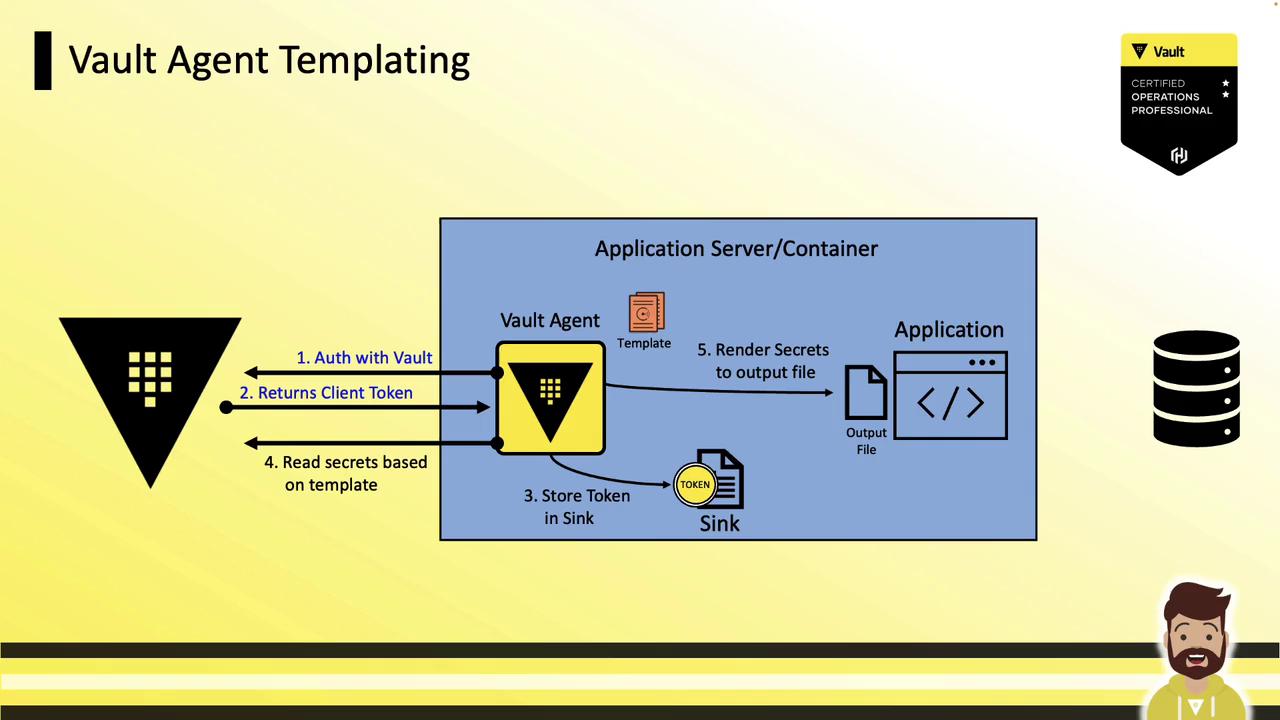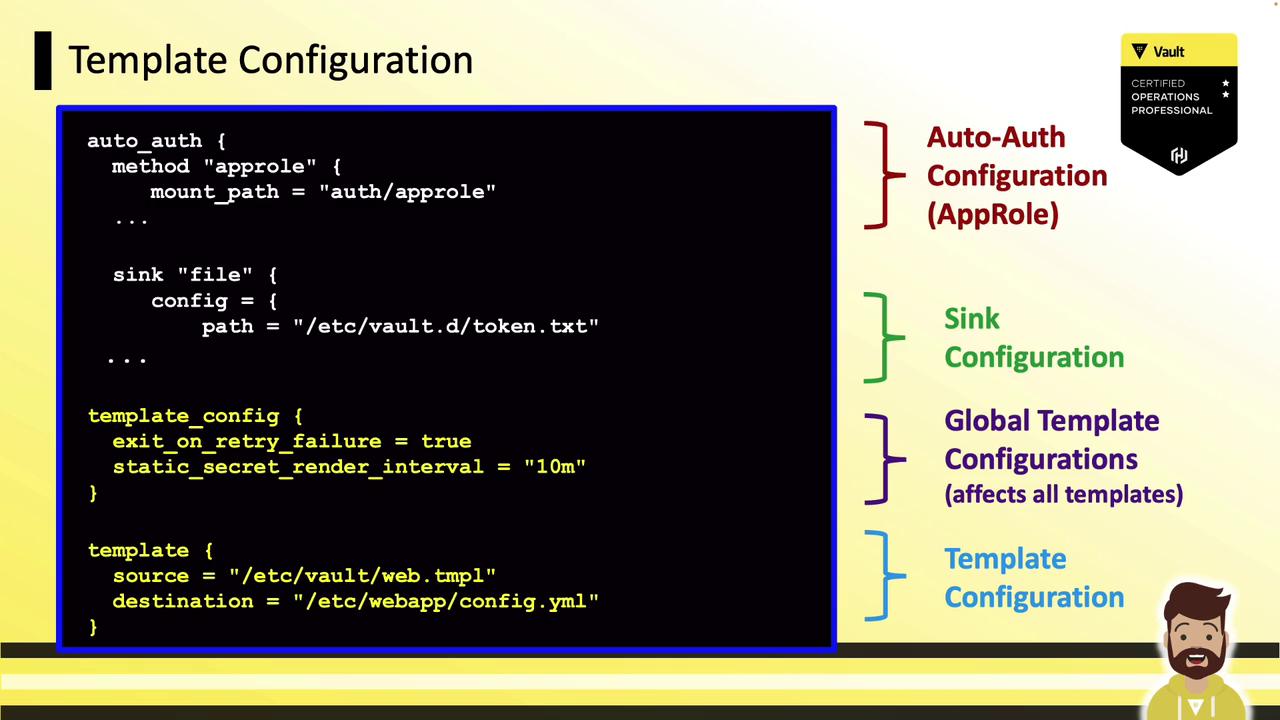HashiCorp Certified: Vault Associate Certification
Vault Agent
Vault Agent Templating
Learn how HashiCorp Vault Agent’s templating feature enables legacy applications to consume Vault secrets from a local file—no direct API calls required.
The Challenge with Legacy Applications
Many legacy apps cannot call Vault’s HTTP API. Even if Vault Agent auto-authenticates and fetches a token, the application can’t use it without direct Vault access. To bridge this gap, Vault Agent can render secrets into a local file that the application reads like any other configuration.
What Is Consul Template?
Vault Agent’s templating builds on Consul Template, a standalone utility that:
- Renders data from Vault or Consul into files
- Manages automatic secrets retrieval and renewal
- Operates without a running Consul cluster when used with Vault
How Consul Template Works
Consul Template follows a simple three-step workflow:
- Template Definition
Create a template file specifying Vault paths and placeholders. - Rendering
Run Consul Template; it fetches secrets and writes them to the destination file. - Application Consumption
The app reads the rendered file at runtime as a static config.

Example Template (config.tmpl)
production:
adapter: postgresql
encoding: unicode
database: orders
host: postgres.hcvop.com
{{ with secret "database/creds/readonly" }}
username: "{{ .Data.username }}"
password: "{{ .Data.password }}"
{{ end }}
secret "database/creds/readonly"points to the Vault secret path..Data.usernameand.Data.passwordextract the JSON fields returned by Vault.
After rendering, config.yml contains:
production:
adapter: postgresql
encoding: unicode
database: orders
host: postgres.hcvop.com
username: "readonly-username"
password: "readonly-password"
The application simply reads config.yml for its credentials.
Vault Agent Templating Overview
Vault Agent now embeds Consul Template functionality—no separate binary needed. It handles both auto-auth and templating in one process:
- Auto Auth
Vault Agent authenticates (e.g., AppRole, Kubernetes) and writes the token to a sink. - Templating
It reads secrets via the template and renders them to a local file. - Application
The app reads the rendered file and connects to external services using up-to-date credentials.

Comparing Consul Template vs. Vault Agent Templating
| Feature | Consul Template | Vault Agent Templating |
|---|---|---|
| Binary | Separate consul-template | Built into vault agent |
| Authentication | External token required | Integrated Auto Auth |
| Secret Renewal | Managed by Consul Template | Managed by Vault Agent |
| Configuration | HCL or CLI flags | HCL in agent.hcl |
Example Vault Agent Configuration
Use this HCL snippet to enable templating in Vault Agent:
Note
Ensure you’re running Vault Agent version 1.5+ to use built-in templating.
auto_auth {
method "approle" {
mount_path = "auth/approle"
# AppRole role_id & secret_id will be supplied here
}
sink "file" {
config = {
path = "/etc/vault.d/token.txt"
mode = 0640
}
}
}
template_config {
exit_on_retry_failure = true # Exit if rendering fails permanently
static_secret_render_interval = "10m" # Refresh KV secrets every 10 minutes
}
template {
source = "/etc/vault/web.tmpl"
destination = "/etc/webapp/config.yml"
perms = "0640"
}
Warning
Storing tokens on disk can be a security risk. Protect the sink file with appropriate OS permissions.
The template file (/etc/vault/web.tmpl) can mirror the earlier Consul Template example.

With this setup, you can run legacy or unmodified applications without any Vault-specific code changes—they simply read secrets from a local file.
Links and References
- Vault Auto Auth (AppRole)
- Vault Auto Auth (Kubernetes)
- Consul Template GitHub
- HashiCorp Vault Documentation
Watch Video
Watch video content